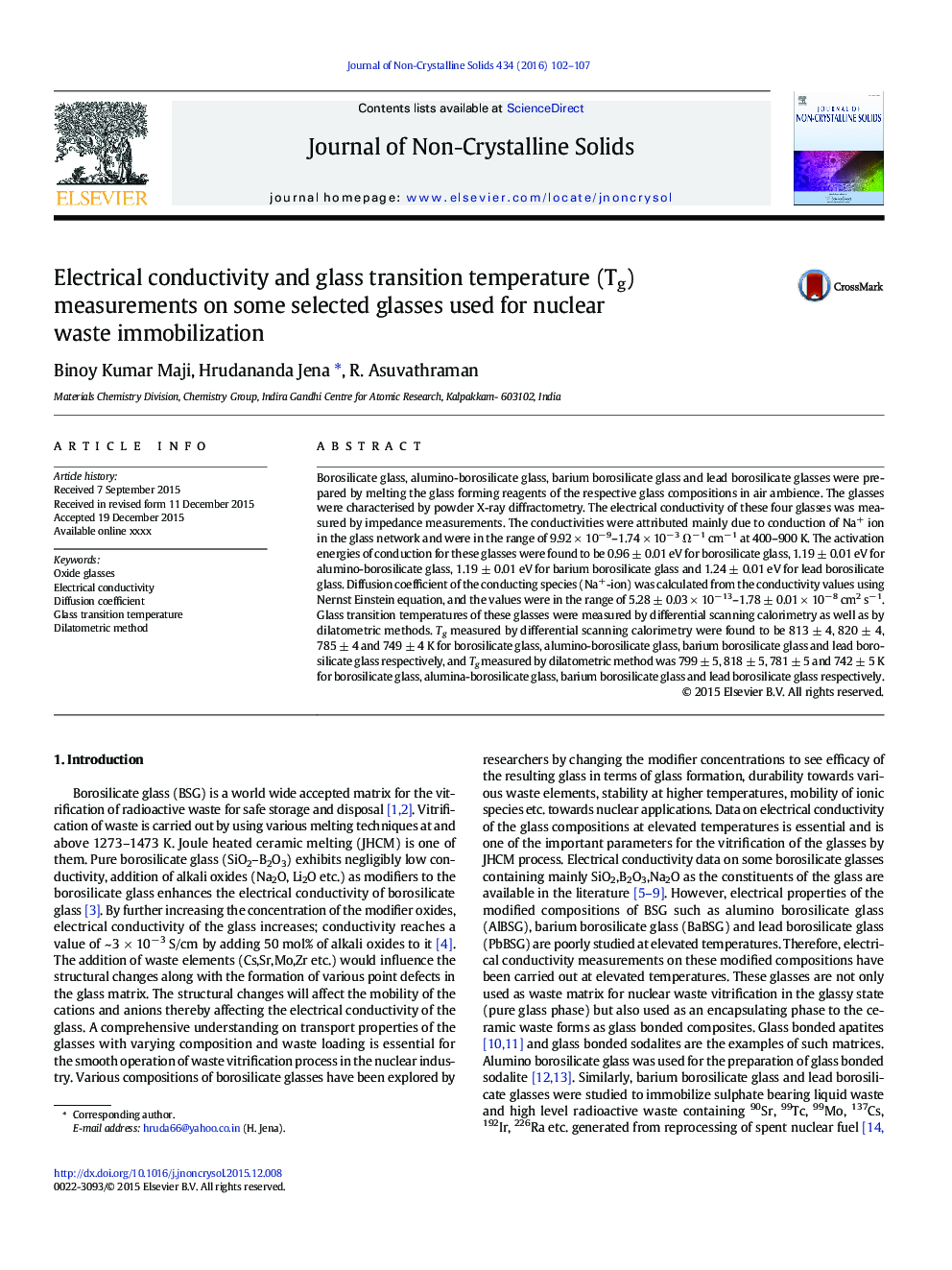| Article ID | Journal | Published Year | Pages | File Type |
|---|---|---|---|---|
| 7900884 | Journal of Non-Crystalline Solids | 2016 | 6 Pages |
Abstract
Borosilicate glass, alumino-borosilicate glass, barium borosilicate glass and lead borosilicate glasses were prepared by melting the glass forming reagents of the respective glass compositions in air ambience. The glasses were characterised by powder X-ray diffractometry. The electrical conductivity of these four glasses was measured by impedance measurements. The conductivities were attributed mainly due to conduction of Na+ ion in the glass network and were in the range of 9.92 Ã 10â 9-1.74 Ã 10â 3 Ωâ 1 cmâ 1 at 400-900 K. The activation energies of conduction for these glasses were found to be 0.96 ± 0.01 eV for borosilicate glass, 1.19 ± 0.01 eV for alumino-borosilicate glass, 1.19 ± 0.01 eV for barium borosilicate glass and 1.24 ± 0.01 eV for lead borosilicate glass. Diffusion coefficient of the conducting species (Na+-ion) was calculated from the conductivity values using Nernst Einstein equation, and the values were in the range of 5.28 ± 0.03 Ã 10â 13-1.78 ± 0.01 Ã 10â 8 cm2 sâ 1. Glass transition temperatures of these glasses were measured by differential scanning calorimetry as well as by dilatometric methods. Tg measured by differential scanning calorimetry were found to be 813 ± 4, 820 ± 4, 785 ± 4 and 749 ± 4 K for borosilicate glass, alumino-borosilicate glass, barium borosilicate glass and lead borosilicate glass respectively, and Tg measured by dilatometric method was 799 ± 5, 818 ± 5, 781 ± 5 and 742 ± 5 K for borosilicate glass, alumina-borosilicate glass, barium borosilicate glass and lead borosilicate glass respectively.
Keywords
Related Topics
Physical Sciences and Engineering
Materials Science
Ceramics and Composites
Authors
Binoy Kumar Maji, Hrudananda Jena, R. Asuvathraman,
